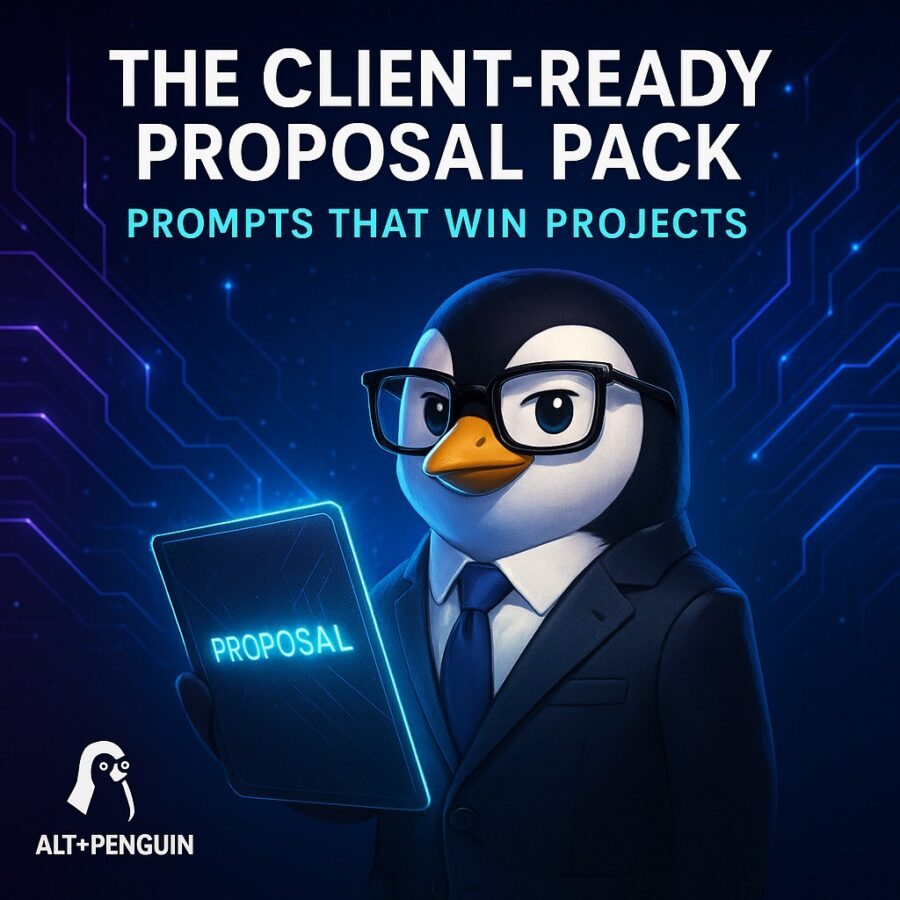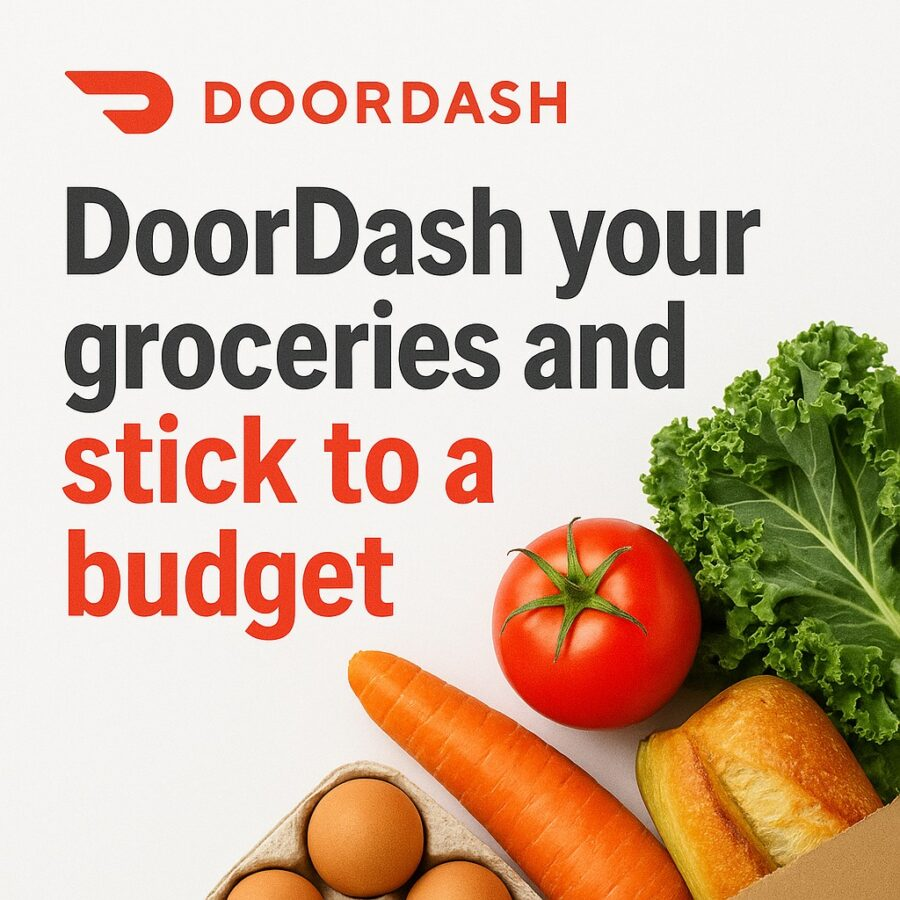Views: 1
There is a moment in every deal when the window is open but the wind could change at any time. Your proposal lands in a crowded inbox. The clock starts. Someone skims the executive summary on a phone while stepping into a meeting. Another stakeholder glances at pricing during a commute. The project is yours to win or lose based on one thing: clarity delivered fast.
This playbook gives you The Client-Ready Proposal Pack: Prompts That Win Projects. You will not get fluff. You will get a practical system that turns your discovery notes and client cues into persuasive proposals, faster follow-ups, and cleaner closes. Each section includes field-tested prompts formatted for immediate use inside ChatGPT-5 or your agent workflow.
Why this works: top proposal studies show that specific sections and faster cycles correlate with higher close rates. Strategic follow-ups after key view counts, multi-stakeholder visibility, and streamlined signing all move the needle. (Proposify)
Client-Ready Proposal Pack: Core Workflow Overview
A repeatable proposal workflow beats inspiration. Here is the baseline you will run:
- Discovery consolidation
- Proposal structure assembly
- Value narrative and outcomes
- Pricing logic with options
- Proof and risk removal
- Call to action and next step
- Smart follow-up cadence with triggers
These seven steps map directly to what high-performing teams put in winning proposals: a personalized opener, a tight executive summary, clear outcomes, interactive pricing, social proof, an action plan, and friction-free signing. (PandaDoc)
Affiliate Link
See our Affiliate Disclosure page for more details on what affiliate links do for our website.

Prompts That Win Projects in Discovery
Good proposals are written in discovery, not in the document editor. Use these to turn messy call notes into crisp raw material.
Prompt: From the notes below, extract the client’s top 3 outcomes in their own words, then rewrite each outcome as a measurable result with a deadline. Output as bullets labeled Outcome, Metric, and Timeline. Notes: [paste transcript or bullets]
Prompt: Summarize the key constraints the client mentioned into Scope, Budget, Timeline, and Compliance. Flag any unknowns as Risks with a clarifying question attached to each.
Prompt: Identify all stakeholders referenced in the conversation. For each person, infer role, what they care about most, and potential objections. Output as a table with columns: Name, Role, Priority, Likely Objections, Response Angle.
Why this helps: proposals shared with more than one stakeholder tend to close at significantly higher rates. Mapping interests lets you write to the room, not just the first reader. (Proposify)
Proposal Structure That Signals “Client-Ready”
Use a predictable skeleton so readers can find what they need in seconds. Keep sections short, scannable, and linked to outcomes.
Recommended sections
- Cover message customized to the client
- Executive summary that states the business win in one short paragraph
- Problem and context (prove you heard them)
- Outcomes and success metrics
- Plan and timeline with milestones
- Team and relevant experience
- Pricing options with what’s included
- Assumptions and dependencies
- Risks and mitigations
- Next step and signature block
These components align with widely cited proposal best practices used by winning teams. (PandaDoc)
Prompt: Draft a one-paragraph executive summary that restates the client’s goal, the measurable outcome we will deliver, and the simplest path to value. Keep it under 120 words and use the client’s vocabulary.
Prompt: Write the Outcomes and Success Metrics section. Convert vague ideas into measurable results. Include no more than five bullets, each with a metric and a date.
Prompt: Create a Milestone Timeline with 4 to 7 milestones. For each, include objective, deliverables, and acceptance criteria a non-technical stakeholder can verify.
Prompt: Draft a Risks and Mitigations table. Include technical, schedule, and organizational risks. For each risk, add an early warning sign and a mitigation we will lead.
Pricing Options That Reduce Friction
When budget tension rises, options restore control. Offer three clear packages: a minimum viable outcome, the recommended engagement, and a performance tier. Keep inclusions explicit.
Prompt: Given these deliverables, model 3 pricing options using Value, Standard, and Accelerator. For each option list scope items, response time, meeting cadence, warranty or tuning period, and a single-price number. Add one-sentence trade-offs per option.
Prompt: Rewrite the pricing section at 8th-grade readability without losing precision. Emphasize what is included and what is not included to reduce scope creep.
Interactive or clearly structured pricing is a documented driver of higher conversion and faster cycles in modern proposals. (PandaDoc)
Proof That Lowers Risk
Buyers do not chase adjectives. They chase evidence. Use relevant case slices, short testimonials, and clear before-after metrics.
Prompt: Transform these project notes into a 4-sentence mini case study. Include Client, Situation, Action, Result. Quantify improvements in time, cost, or conversion.
Prompt: Turn this testimonial into a one-line pull quote that speaks to speed, predictability, or ROI. Keep it under 18 words.
Prompt: Write a compliance and security paragraph that addresses data handling, access control, and vendor policy alignment in plain language for a non-technical audience.
The Value Narrative: Tell a Short, Useful Story
Decision makers skim. Keep the value story short, concrete, and aligned to outcomes.
Prompt: Write a 5-sentence value narrative that explains how the plan turns the client’s constraints into progress within 30, 60, and 90 days. Use verbs tied to outcomes: reduce, accelerate, prevent, convert, and retain.
Readers prefer concise, useful content. Many B2B buyers actively favor short-form assets that get to the point first. (Backlinko)
Affiliate Link
See our Affiliate Disclosure page for more details on what affiliate links do for our website.
Visuals That Clarify, Not Decorate
Charts and one-page diagrams help non-technical stakeholders follow the sequence. Avoid heavy visuals that distract from decisions.
Prompt: Summarize the project plan as a one-page ASCII diagram with three swimlanes: Client, Vendor, Shared. Label each milestone and handoff. Keep it readable in email.
Prompt: Create a simple 5-step checklist graphic description for a designer to render. Steps: Kickoff, Draft, Review, Revise, Sign.
The “Next Step” That Gets Signed
Close with a clear single next step. That might be a 30-minute review call, an acceptance click, or an invoice trigger. Make signing easy.
Prompt: Write a closing section that gives one action: “Approve Option B and choose Tuesday or Thursday for kickoff.” Include a one-sentence reminder of outcomes and a light nudge on timeline risk if delayed.
Friction-free approval and e-signatures are repeatedly linked with better conversion across proposal platforms. (Proposify)
Smart Follow-Up Cadence Using View Triggers
Do not vanish after sending. Tie follow-ups to engagement signals. If a proposal stalls after specific view thresholds or idle days, nudge with value, not guilt.
Prompt: Write a 5-email post-proposal sequence triggered by events: same-day open, 2-day no reply, 7 views by 1 recipient, a second stakeholder view, and 7-day no decision. Each email should be under 100 words, add one new piece of clarity, and invite a short reply or calendar link.
Data from large-scale proposal analyses suggests that follow-ups after about two days of inactivity or after multiple views can revive momentum, especially when more than one stakeholder is involved in the review. (Proposify)
Affiliate Link
See our Affiliate Disclosure page for more details on what affiliate links do for our website.

Templates You Can Reuse Without Sounding Like a Robot
Templates save time, but personalization wins. Blend both: a strong skeleton plus client-specific details.
Prompt: Using this generic proposal template, personalize the cover letter to the client’s industry and urgency. Mirror their terminology for the top priority and keep the opener to 4 sentences.
Prompt: Rewrite the executive summary using the client’s own phrasing from the discovery transcript. Keep any numbers they used. Add one line that connects their metric to our milestone plan.
Prompt: Replace jargon across the full proposal with the client’s words. Output a change list showing original term, client term, and where it appears.
Proposal Quality Checklist Before You Hit Send
Run a short inspection to prevent avoidable friction:
- Every claim ties to an outcome and metric
- Pricing options each fit a different risk profile
- Milestones include acceptance criteria
- Assumptions are explicit and reasonable
- Risks have clear mitigations and early warning signs
- The call to action is one line and actionable
- Formatting is readable on mobile
Prompt: Perform a 12-point readability and risk audit on the draft. Score each section 1 to 5 on Clarity, Measurability, and Objection Readiness. Recommend only the edits with the highest impact.
Speed Without Sloppiness: How to Shorten Your Cycle
Fast proposals do not mean careless proposals. Tight cycles correlate with better performance when the fundamentals are intact. Focus on reusable blocks, shared proof, and clean handoffs.
Prompt: From our last 5 proposals, extract reusable blocks that earned positive client feedback. Classify them as Proof, Process, or Plan. Store the snippets with tags for quick reuse.
Prompt: Create a 3-template library: consulting, productized service, and support retainer. For each, output placeholders for client vocabulary, outcomes, milestones, pricing options, and sign-off.
Top performers often report shorter sales cycles when they simplify structure, clarify pricing, and reduce approval friction. (Proposify)
Multi-Stakeholder Messaging: Write to Everyone Who Matters
Most proposals are seen by just one person, but multi-threaded engagement can nearly double close rates. So write a brief note to each likely reader. (Proposify)
Prompt: Generate 3 micro-summaries tailored to CFO, COO, and Department Lead. Each should be 3 sentences and answer one key concern: financial prudence, operational predictability, and team adoption. Include page references.
Prompt: Draft a one-liner for the buyer champion to paste internally that frames the proposal’s value and the decision needed this week.
Affiliate Link
See our Affiliate Disclosure page for more details on what affiliate links do for our website.
Metrics to Track After You Send
Track proposal analytics like a product launch. Watch opens, views by page, time on pricing, and stakeholder spread. Improve your next draft using the patterns.
Prompt: Based on these document analytics [paste data], identify drop-off points and write one sentence per section on how to reduce friction. Suggest a single experiment for pricing layout.
Automated reporting across document and template usage is a low-effort way to spot bottlenecks and optimize quote-to-cash. (PandaDoc)
Minimal Design That Maximizes Comprehension
Readable beats ornate. Use white space, consistent headings, and short paragraphs. Keep tables clean. Ensure mobile readers can make a decision without pinching and zooming.
Prompt: Rewrite headings and paragraph lengths to fit phone screens. Limit paragraphs to 3 sentences. Convert any dense lists into simple tables with 2 to 4 columns.
Industry-Specific Add-Ons You Can Toggle
Tailor a small appendix to the client’s world. These micro-sections build trust with specialized buyers.
Compliance add-on
Prompt: Draft a one-page compliance appendix covering data retention, access tiers, audit logging, and vendor onboarding steps. Reference SOC 2-aligned practices in plain language.
IT and SRE add-on
Prompt: Produce an operational runbook summary for handoffs: incident severity levels, escalation timeframes, and change windows. Keep terms consistent with the client’s tooling.
Marketing add-on
Prompt: Create a content governance note that defines review stages, brand voice do’s and don’ts, and asset ownership. Add a one-paragraph UGC rights clause.
Fast Edits When Procurement Strikes
Procurement will ask for redlines. Plan for it.
Prompt: Scan the contract for clauses that typically draw legal comments: liability caps, IP ownership, termination, and confidentiality. Write a short rationale for each clause in friendly language and propose two fallback positions.
Prompt: Turn the SOW into bulletproof scope. For each deliverable, state what is included, what is excluded, and what counts as a change request.
The Client-Ready Proposal Pack: One-Page Checklist
Copy this into your Notion or CRM task template:
- Discovery notes distilled to outcomes and risks
- Executive summary under 120 words
- Outcomes quantified with deadlines
- Milestones with acceptance criteria
- Three pricing options with trade-offs
- Proof section with one mini case and one pull quote
- Risks and mitigations table
- Next step with one action and calendar link
- Follow-up sequence tied to view signals
- Stakeholder micro-summaries
- Mobile readability pass
- Analytics plan and improvement loop
Prompt: Using the checklist above, assess this draft proposal and return a prioritized edit plan in under 10 bullets. Limit to changes that improve measurability, reduce risk, or increase speed to signature.
Affiliate Link
See our Affiliate Disclosure page for more details on what affiliate links do for our website.
](https://altpenguin.com/wp-content/uploads/2025/08/veed-ad.webp)
Put It All Together: A Mini Example You Can Copy
Below is a compact pattern you can reuse on your next opportunity. Paste the prompts into your agent, fill in client specifics, and ship.
Cover Message
Prompt: Write a 4-sentence cover note that thanks the client by name, restates their goal, reminds them of the outcome metric, and links to the kickoff slot picker. Keep the tone warm and professional.
Executive Summary
Prompt: Produce a 100- to 120-word executive summary that states the business impact, the plan in one sentence, and the expected timeline to first value.
Outcomes
Prompt: List 3 to 5 outcomes with a metric and due date each. For each outcome, add a one-line reason it matters to revenue, risk, or customer experience.
Plan and Timeline
Prompt: Draft a milestone plan with 5 steps. Add acceptance criteria that a non-technical stakeholder can verify in a meeting or dashboard.
Pricing Options
Prompt: Model Value, Standard, and Accelerator options. Include inclusions, exclusions, cadence, and one-line trade-offs. Present as a clean table.
Proof
Prompt: Write a 4-sentence mini case study with quantifiable results. Add one pull quote under 18 words.
Risks and Mitigations
Prompt: List the top 5 risks. For each, provide the early indicator and the mitigation we own.
Next Step
Prompt: Write a one-line call to action with a choice of two kickoff windows. Include the signature link and a short reminder of the primary outcome.
Follow-Up Sequence
Prompt: Create 5 short follow-ups tied to analytics triggers: same-day open, 2-day idle, 7 views one user, second stakeholder view, 7-day no decision. Keep each message under 100 words and value-forward.
Advanced: Turn This Into a GPT-5 Proposal Agent
If you are ready to scale beyond manual copy-paste, build a lightweight agent that ingests discovery notes, applies your template blocks, and proposes a draft with your voice and pricing logic. A simple stack uses:
- A prompt library for each section
- A retrieval store for cases, quotes, and proof
- A small rules file for pricing tiers and options
- An export routine for your document format and e-signature flow
- A trigger that sends the follow-up sequence based on analytics
To stand up your agent pattern, start with ChatGPT Agent Creation: A Practical Field Guide and ChatGPT Agent Creation: How to Scale Without Breaking Things. Both walk through modular design and safe scaling so your proposal agent stays reliable as you add features. (Alt+Penguin)
Why This Pack Aligns With What Buyers Want Now
B2B buying is increasingly digital and self-serve. Buyers prefer clear, concise assets that show value quickly and make it easy to act. The sections and prompts here are tuned to that reality, with short-form clarity, proof, and fast approvals. (Backlinko)
Your Next Three Moves
- Install the checklist in your CRM or Notion.
- Pick three prompts above and use them on a live deal today.
- Instrument the follow-ups with view-based triggers so you never leave a warm proposal to cool in silence.
Ship proposals that read like decisions already made. Use The Client-Ready Proposal Pack: Prompts That Win Projects across your next five opportunities and track shorter cycles, clearer conversations, and stronger win rates.
When you want to connect this with your content engine and agent stack, jump into these helpful deep dives on Alt+Penguin:
- GPT-5 Prompts for Content Strategy
- The Basics for Creating an AI Agent with ChatGPT-5
- ChatGPT Prompts That Predict and Prevent System Failures




